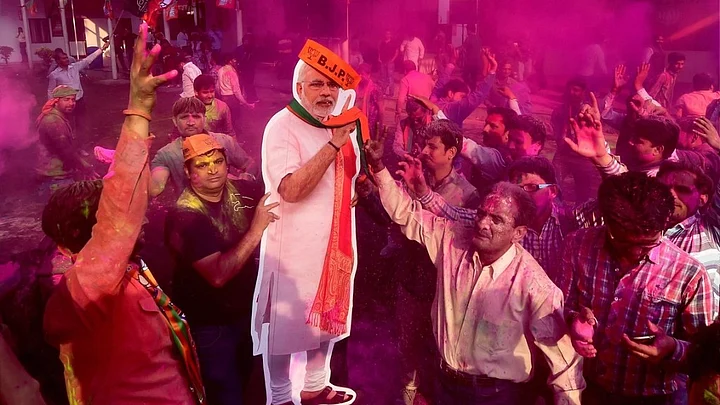It’s an undeniable fact by now that the Bharatiya Janata Party’s (BJP) landslide victory in UP has got everyone stunned. Some political experts and polling agencies may now be claiming to have perceived the mood of the voters, but in reality, the results have dashed all anticipations.
In alliance with the Apna Dal and Suheldev Bharatiya Samaj Party, the BJP has garnered a brute majority with 325 seats. And the party garnered a 39.7% vote share, which is considered to be the finest performance by any party in Uttar Pradesh after Independence.
Now the real pertinent question is, how did the Modi (and BJP) mega wave go unnoticed prior to the elections?
Why the Waves Were Not Observed?
- There are 13.85 crore voters in UP
- Approximately 60% of the electorate cast its vote
- BJP got 3.44 crore votes – merely 24% of all votes in UP
There is another side of the same coin. Let us assume that among 100 voters in UP, 76 either did not cast their votes or might have voted against the BJP. In such a situation, when journalists and survey agencies spoke to these 100 voters while making an assessment of what the election results might turn out, it’s possible that they might have gathered a wrong picture.
When in the 2014 Lok Sabha elections the BJP got 42.63% votes, waves in favour of the BJP were visible. Probably contrary to the manner the BJP voters did in 2014, this time they cast their votes silently without going crazy about it.
Thin Margin Seats
Almost 74 of 403 seats were won by a thin margin of 10,000 or fewer votes and 45 of these did not even have a margin of 5,000 votes. Such a thin margin win on these seats clearly proves that the results could have gone either way.
Breaches Marked the Alliance
Despite having forged a pre-poll alliance, the Samajwadi Party and the Congress contested against each other in 14 constituencies, where the BJP won 11 seats. Four among these 11 seats have seen SP and Congress garner more votes – if their numbers are combined – than that of the saffron party, which means that had these two parties fought as an alliance there, the BJP would have lost these four seats.
The AIMIM Factor
Assaduddin Owaisi’s party contested from 38 seats and got 0.2% votes and proved to be a spoilsport for the alliance and the BSP. The AIMIM emerged as a runner-up in only one seat. On other seats, they managed to get even less than 10,000 votes. There are four seats where if their votes had been added to the votes of either of the runners up – i.e. the alliance or the BSP – the BJP would have lost them too.
Was There a Grand Alliance?
The BJP got approximately 1 crore votes more than their nearest rival, the SP-Congress alliance. Even if 1,89,23,689 votes of the BSP were added to 1,92,81,352 votes of the SP-Congress alliance and 54,16,324 of others, the number would have been 92 lakh more than what the BJP had garnered. This only goes on to prove that if the much talked-about grand alliance had materialised before the election in UP like that in Bihar, it could have left the BJP far behind, not only in the number of votes but seats as well.
Acid Test For BJP
But it might not be a cakewalk for the BJP from here on. Now that the party has swept the UP elections, it has left its voters high on expectations. People who have helped the party win with a 3/4 majority, now want their returns in terms of development, employment, law and order, electricity, potable water and education. Keeping its fan following aside, it’s going to be no less than an acid test for the BJP.
(This story was originally published in Quint Hindi.)
